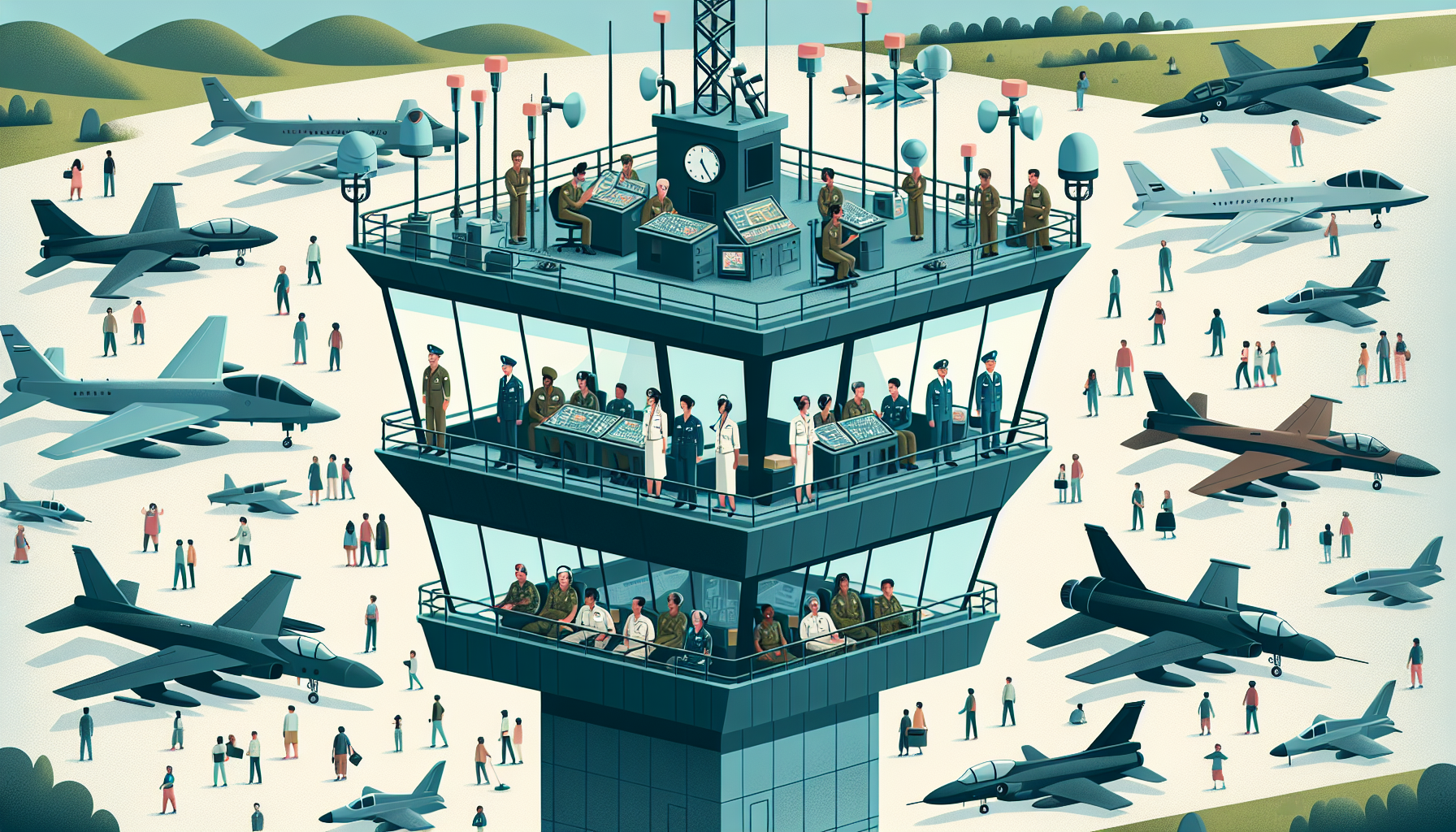Definition
The Air Support Operations Center (ASOC) is a vital component of the United States Air Force’s Tactical Air Control System, responsible for coordinating and directing air support for land forces. It serves as the primary communications link between the supported ground force commander and the air operations center, ensuring close air support is efficiently integrated with ground operations. The ASOC employs Tactical Air Control Party personnel to communicate with and guide aircraft to designated targets, ensuring optimal mission coordination and success.
Key Takeaways
- The Air Support Operations Center (ASOC) is a tactical-level command and control center responsible for coordinating and managing air support requests from ground forces during military operations.
- ASOC personnel work closely with ground force commanders, air traffic controllers, and Joint Terminal Attack Controllers (JTAC) to effectively synchronize, prioritize, and direct close air support to assist friendly forces on the battlefield.
- By providing real-time communication and decision-making capabilities between air and ground elements, the ASOC enhances the overall efficiency, safety, and success of integrated air-ground operations.
Importance
The Air Support Operations Center (ASOC) is a crucial component of military operations, as it serves as the primary coordination and communication hub between ground-based forces and air assets.
By facilitating seamless collaboration between these elements, the ASOC ensures timely and accurate delivery of air support, significantly enhancing the efficiency and effectiveness of military maneuvers.
This coordination plays a vital role in various mission objectives, such as air strikes, reconnaissance, tactical air support, and other essential combat capabilities.
In essence, the ASOC plays a pivotal role in the success of modern warfare by strengthening communication channels and enabling a more integrated, synchronized approach to addressing evolving threats on the battlefield.
Explanation
The Air Support Operations Center (ASOC) plays a critical role in harmonizing and integrating air power on the modern battlefield. Its primary purpose is to facilitate communication and coordination between ground forces and their airborne counterparts, ensuring that air assets are effectively employed to support ground operations.
This involves ongoing assessment of mission requirements, availability of aircraft, and evaluation of enemy capabilities, among other factors. The ASOC acts as a centralized hub where the exchange of information takes place in real-time, enabling fast, accurate decisions to be made by commanders to maximize the impact of air power on the ground campaign.
Moreover, the ASOC is responsible for coordinating and managing the allocation of scarce air resources to ensure that the support provided to land forces is prioritized and synchronized based on the overarching strategic goals of the operation. This involves resource prioritization, tasking and re-tasking, and battle rhythm maintenance.
The result is an improved situational awareness for both ground and airborne commanders, enabling them to better navigate the battlefield and accomplish their objectives. By leveraging the advantages of air power through the ASOC, the modern armed forces can increase mission effectiveness, ultimately improving the likelihood of overall mission success.
Examples of Air Support Operations Center (ASOC)
Operation Desert Storm (1991) – The Air Support Operations Center played a vital role in coordinating airborne operations during the Gulf War. The ASOC was responsible for managing the close air support operations and coordinating with the land forces during the offensive against Iraq’s military. As a result, they contributed to the rapid success of the coalition forces by providing accurate and timely air support to ground troops.
Operation Enduring Freedom (2001-present) – During the ongoing military operations in Afghanistan, the Air Support Operations Center proved to be a vital component in the fight against the Taliban and Al-Qaeda forces. ASOCs were established to manage and support the air assets operating within the Afghan theater, ensuring a seamless integration between air and ground forces. This close coordination enabled the U.S. and coalition forces to conduct effective counterinsurgency operations and maintain a strong presence within Afghanistan.
Operation Iraqi Freedom (2003-2011) – In the invasion of Iraq, the Air Support Operations Center played a central role in planning and executing air support missions. The ASOCs were responsible for closely coordinating with ground forces to provide rapid and precise close air support for both advancing and defensive operations. This integration of air and ground assets contributed significantly to the swiftness of the coalition’s military advancements and the ultimate overthrow of Saddam Hussein’s regime.
“`html
Air Support Operations Center (ASOC) FAQ
What is an Air Support Operations Center (ASOC)?
An Air Support Operations Center (ASOC) is a component of the Theater Air Control System (TACS) responsible for coordinating and directing close air support, air interdiction, and other tactical missions for ground commanders.
What is the primary function of ASOC?
The primary function of ASOC is to effectively execute the ground commander’s air support requirements and serve as a liaison between ground and air units, ensuring seamless communication and coordination for successful mission outcomes.
Who can request support from the ASOC?
Ground commanders, Joint Terminal Attack Controllers (JTACs), and other authorized personnel can request air support through the ASOC to ensure efficient integration of air support within the mission framework.
How does the ASOC coordinate with Airborne Warning and Control System (AWACS)?
The ASOC and AWACS work together to maintain situational awareness, share critical information, and coordinate air support missions in an integrated airspace. This partnership ensures optimized use of available resources and effective execution of air support missions.
What are the key components and systems within an ASOC?
Key components and systems within an ASOC typically include secure communication systems, command and control systems, data links, radar systems, and multi-functional displays that enable efficient planning, coordination, and management of air support missions for ground operations.
“`
Related Military Operation Terms
- Air Traffic Control (ATC)
- Close Air Support (CAS)
- Tactical Air Control Party (TACP)
- Airborne Warning and Control System (AWACS)
- Joint Terminal Attack Controller (JTAC)
Sources for More Information
 Benefits.com Advisors
Benefits.com Advisors
With expertise spanning local, state, and federal benefit programs, our team is dedicated to guiding individuals towards the perfect program tailored to their unique circumstances.
Rise to the top with Peak Benefits!
Join our Peak Benefits Newsletter for the latest news, resources, and offers on all things government benefits.




















